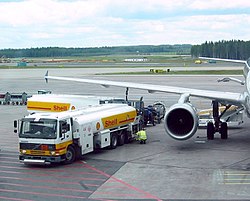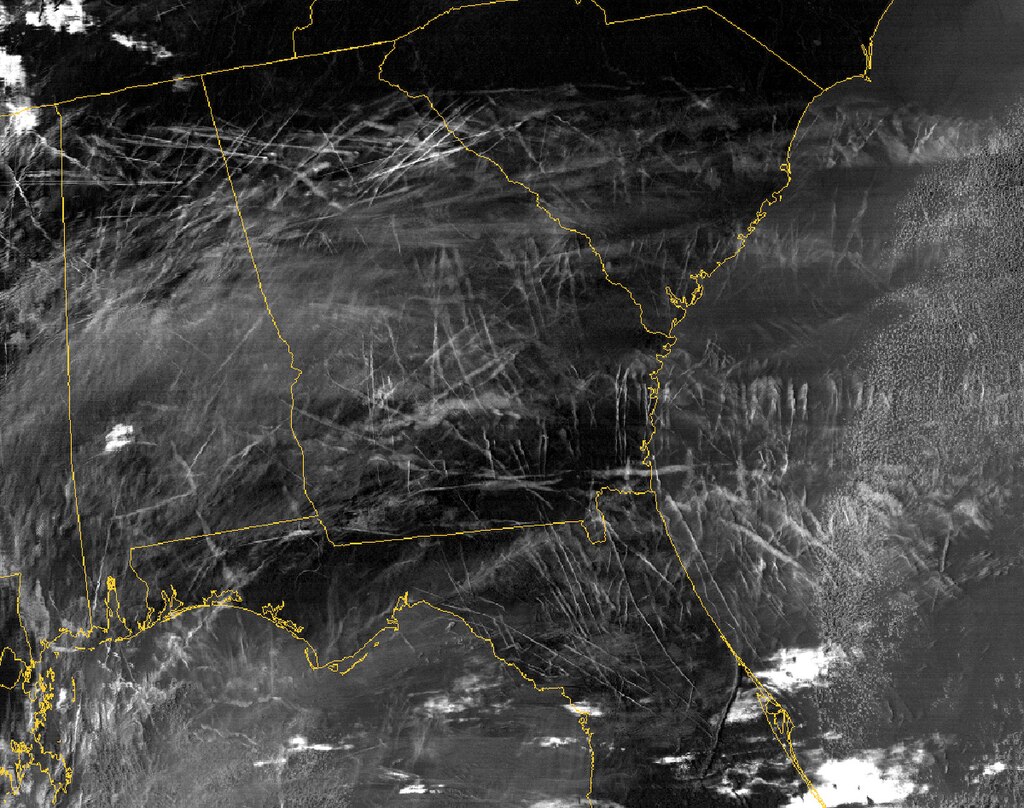Contrails nasa2004October13
Autor/Urheber:
NASA
Shortlink:
Quelle:
Größe:
1200 x 947 Pixel (594435 Bytes)
Beschreibung:
Contrail Clutter over Georgia. Photo from MODIS/Terra Satellite (NASA)
Explanation from NASA: Artificial clouds made by humans may become so common they change the Earth's climate. The long thin cloud streaks that dominate the above satellite photograph of Georgia are contrails, cirrus clouds created by airplanes. The exhaust of an airplane engine can create a contrail by saturating the surrounding air with extra moisture. The wings of a plane can similarly create contrails by dropping the temperature and causing small ice-crystals to form. Contrails have become more than an oddity - they may be significantly increasing the cloudiness of Earth, reflecting sunlight back into space by day, and heat radiation back to Earth even at night. The effect on climate is a topic of much research. this year (2004), NASA made measure of abundance of contrails with people participation in a contrail counting exercise during two days.
Explanation from NASA: Artificial clouds made by humans may become so common they change the Earth's climate. The long thin cloud streaks that dominate the above satellite photograph of Georgia are contrails, cirrus clouds created by airplanes. The exhaust of an airplane engine can create a contrail by saturating the surrounding air with extra moisture. The wings of a plane can similarly create contrails by dropping the temperature and causing small ice-crystals to form. Contrails have become more than an oddity - they may be significantly increasing the cloudiness of Earth, reflecting sunlight back into space by day, and heat radiation back to Earth even at night. The effect on climate is a topic of much research. this year (2004), NASA made measure of abundance of contrails with people participation in a contrail counting exercise during two days.
Lizenz:
Public domain
Credit:
On Nasa's page (Astronomy Picture of the Day )
Relevante Bilder

(c) adapted from Bock, L. and Burkhardt, U.: Contrail cirrus radiative forcing for future air traffic, Atmos. Chem. Phys., 19, 8163–8174, https://doi.org/10.5194/acp-19-8163-2019, 2019., CC BY 4.0




(c) Gerd A.T. Müller, CC BY-SA 3.0 de
Relevante Artikel
Umweltauswirkungen des LuftverkehrsLuftverkehr hat Umweltauswirkungen. Schädigende Folgen beruhen auf Schadstoffemissionen, auf Fluglärm und Flächenversiegelungen an Flughäfen. Beim Verbrennen fossiler Brennstoffe bei Flugzeugen mit Verbrennungsantrieb entstehen gesundheitsschädliche und klimawirksame Gase sowie Änderungen der Wolkenbedeckung, die insgesamt zur globalen Erwärmung beitragen. .. weiterlesen
